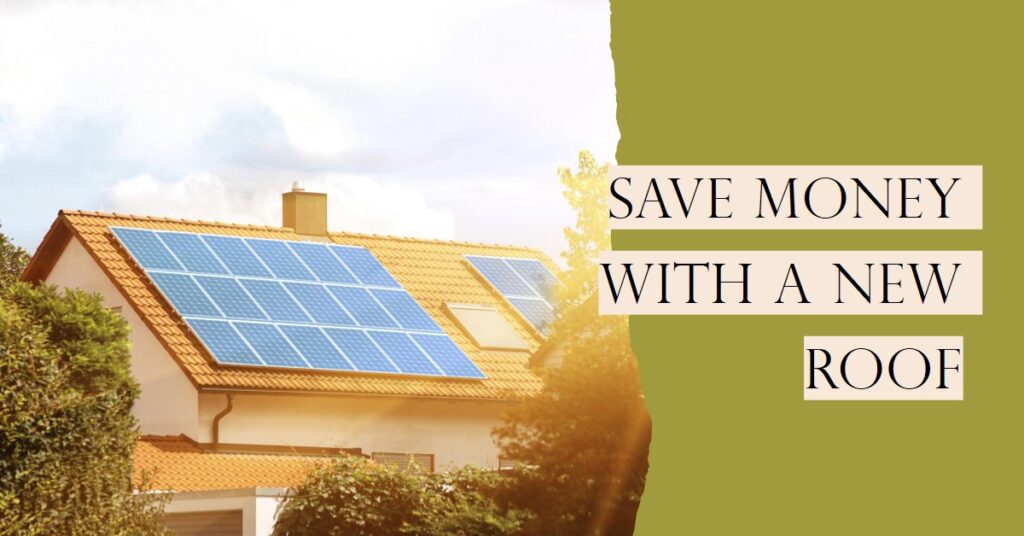Yes, a new roof can significantly reduce energy bills and make your home more energy-efficient. The key lies in the materials and technology employed in constructing your new roof.

The Problem with Older Roofs
Older roofs are often built using outdated roofing materials and building technology. This makes them less energy-efficient and greatly strains your heating and cooling system.
As your roof ages, it breaks down and becomes less effective. This is not just a matter of wear and tear; it’s a matter of outdated design and materials that must be updated for energy efficiency.
Temperatures and humidity levels from the outdoors begin to seep in and affect your home’s internal environment. This means your HVAC system has to work harder to maintain a comfortable temperature, leading to higher energy bills.
The inefficiency of older roofs can be a silent drain on your resources, one that you might only notice once you see the numbers on your monthly utility bill.
The Efficiency of New Roofs
A new roof can be a game-changer when it comes to energy efficiency. Newer materials and construction technologies have been developed with energy efficiency in mind.
Installing a new roof can help reduce your monthly electricity or gas usage because it’s more efficient than older roofs built using outdated materials and technology.
For example, modern roofing materials are designed to reflect more sunlight and absorb less heat than traditional roofing materials. This prolongs the roof’s life and helps lower energy costs.
The less heat your roof absorbs, the less work your air conditioning system has to do and the less energy you consume.
The Power of Reflective Roofs
One of the most effective ways to make a roof more energy-efficient is to make it reflective.
Reflective roofs can reduce the temperature on the roof’s surface by as much as 30 percent.
This significant reduction directly impacts how much energy is needed to cool the home.
When the roof temperature is lowered, it translates into a 10-15 percent reduction in air conditioning or heating needed to maintain a home.
This is not just good for your wallet but also for the environment. Lower energy consumption means fewer greenhouse gas emissions, which is a win-win situation for everyone involved.
Long-Term Benefits
A new, energy-efficient roof’s benefits extend beyond immediate cost savings on your utility bills.
A new roof adds value to your home and can be a selling point if you decide to move.
It’s an investment that pays off in multiple ways, from lowering your energy bills to increasing the resale value of your home.
Moreover, many states and local governments offer tax incentives for homeowners who upgrade to energy-efficient roofing. This can offset the initial cost of the roof and make it an even more attractive option.
Conclusion
In summary, a new roof can reduce energy bills and make your home more energy-efficient. The advantages are clear, from modern materials and construction techniques to the benefits of reflective roofing.
Not only will you save money in the short term, but you’ll also be making a long-term investment in the value and efficiency of your home.
So the next time you consider home improvements, don’t overlook the roof over your head—it could be the key to a more energy-efficient future.
